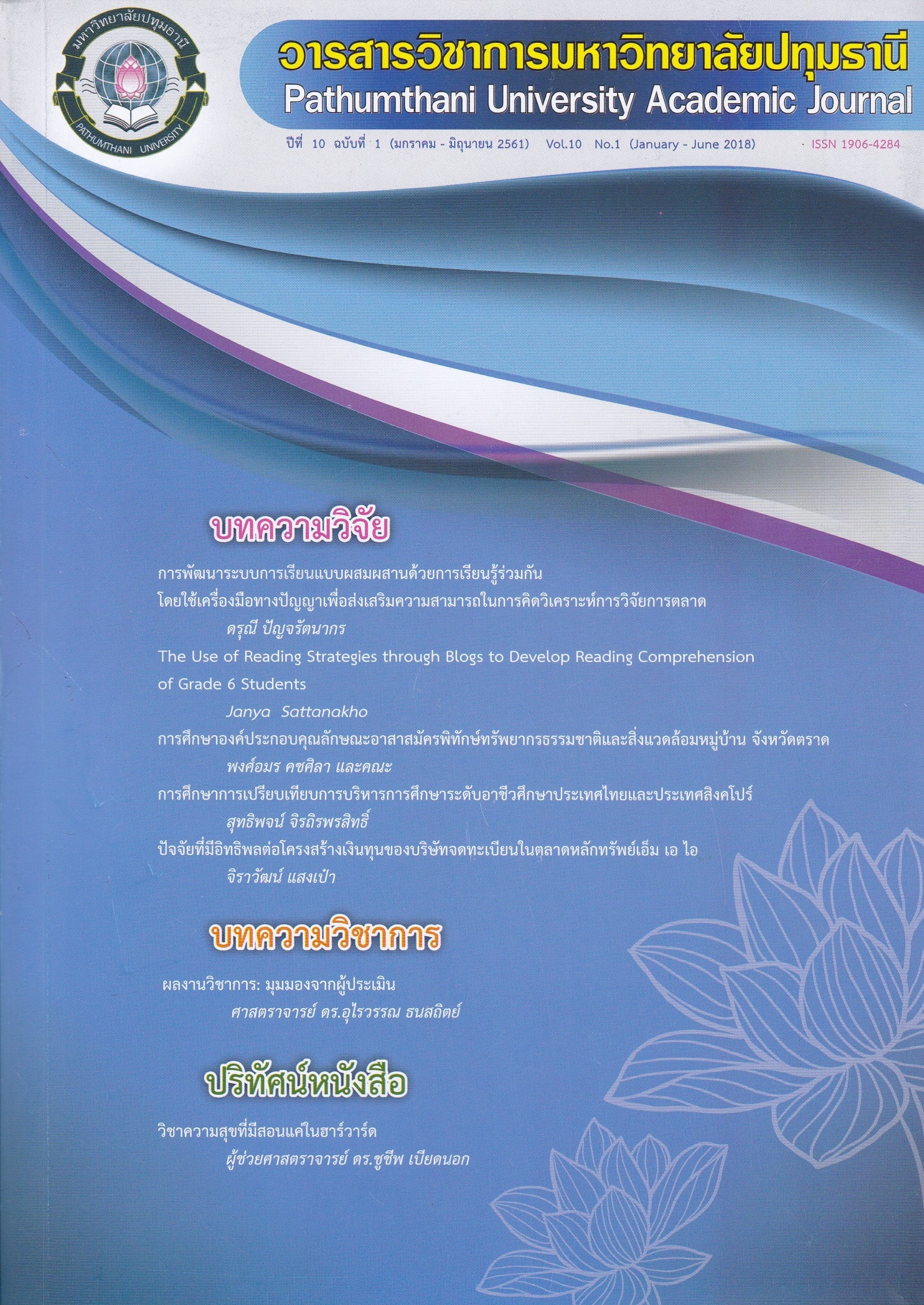Achievement of the Keeping Five-Precepts in Villages Project (the Project) applied in Amphur Mueng, Loei Province, Thailand.
Keywords:
ผลสัมฤทธิ์, โครงการ, หมู่บ้านรักษาศีล 5Abstract
This article studies the achievement of the Keeping Five-Precepts in Villages Project (the Project) applied in Amphur Mueng, Loei Province, Thailand. The Project is a national-level policy for villages or local communities in Thailand, initiated by Somdet Phra Maha Ratchamangalacharn, with a key purpose to increase level of peace for all Thai people throughout the nation by encourage people to keep the five precepts. This article studies the achievement of the Project on various aspects by using the CIPP Model as an assessment methodology. In addition, in order to assess the achievement, interviews are conducted with both organising officers and participants in the Project. The achievement of the Project is assessed according to five categories as follows. First, from overview aspect, the Project is appropriate for conducting as a national policy. Second, from introduction aspect, the Project receives supports from both public and private sectors. Third, from applicability aspect, the Project is monitored regularly by working committees for coordinating and following the application. Forth, from self-evidence aspect, participants in the Project have gain improvements on keeping the five-precepts, donation principles, and practicing meditation. Finally, from social aspect, participants have increased their awareness to do good deeds for their community which results directly to lower crime rates in the society. However, it is necessary to establish a development of the Project by increasing media advertising and having more organising officers. In conclusion, the Keeping Five-Precepts Villages Project provides real achievement in practical and is a solid foundation policy in order to create peace into Thai communities.
References
2. ทวีป ศิริรัศมี. (2554). การวางแผนพัฒนาและการประเมินโครงการ. กรุงเทพฯ : สำนักงาน กองทุนสนับสนุนการวิจัย.
3. พระธรรมปิฎก(ประยุทธ์ ปยุตฺโต). (2540). พจนานุกรมพุทธศาสน์ ฉบับประมวลศัพท์(ช าระ เพิ่มเติม ช่วงที่ 1). พิมพ์ครั้งที่ 11, กรุงเทพฯ : โรงพิมพ์มหาจุฬาลงกรณราชวิทยาลัย. พระราชวรมุนี(ประยูร ธมฺมจิตฺโต). (2542, มีนาคม – มิถุนายน). “การเสวนาทางวิชาการ เรื่อง การศึกษาเพื่อการพัฒนาอย่างยั่งยืนตามแนวคิดเชิงพุทธศาสตร์,” วารสารครุศาสตร์ ปีที่ 27 ฉบับที่ 3. กรุงเทพฯ : โรงพิมพ์มหาจุฬาลงกรณ์ราชวิทยาลัย. ส านักงานพระพุทธศาสนาแห่งชาติ. (2557). คู่มือด าเนินโครงการหมู่บ้านรักษาศีล 5. กรุงเทพฯ : โรงพิมพ์กรมการศาสนา. สำนักงานพระพุทธศาสนาแห่งชาติ. (2558). ข่าวสารประชาสัมพันธ์ สถิติผู้เข้าร่วมโครงการ หมู่บ้านรักษาศีล 5. ส านักงานพระพุทธศาสนาแห่งชาติ จังหวัดเลย. ส านักงานต ารวจแห่งชาติ. (2559). สถิติการรับแจ้งเหตุอาชญากรรม. กรุงเทพฯ : ระบบ สารสนเทศ ส านักงานต ารวจแห่งชาติ ส านักวิจัยสถาบันบัณฑิตพัฒนบริหารศาสตร์. (2540). การส ารวจความรู้ความเข้าใจและการ ปฏิบัติธรรมตามหลักพระพุทธศาสนา ของเยาวชนไทยที่ก าลังศึกษาอยู่ในเขต กรุงเทพมหานคร.กรุงเทพฯ : ส านักพิมพ์สถาบันบัณฑิตพัฒนบริหารศาสตร์.
Downloads
Published
How to Cite
Issue
Section
License
บทความที่ได้รับการตีพิมพ์เป็นลิขสิทธิ์ของวารสารมหาวิทยาลัยปทุมธานี
ข้อความที่ปรากฎในบทความแต่ละเรื่อง เป็นความคิดเห็นส่วนตัวของผู้เขียน กองบรรณาธิการไม่จำเป็นต้องเห็นด้วยเสมอไป และไม่มีส่วนรับผิดชอบใด ๆ ถือเป็นความรับผิดชอบของผู้เขียนแต่เพียงผู้เดียว



